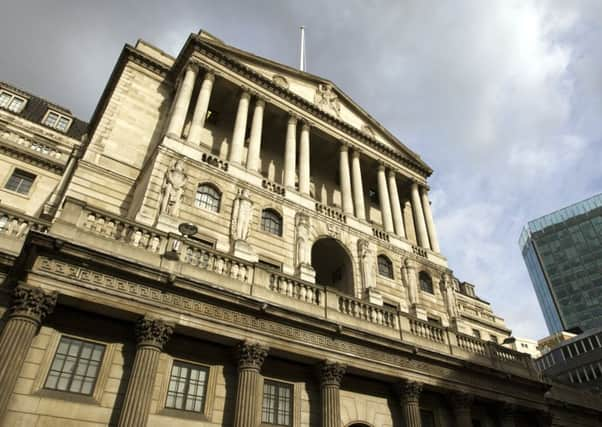Bill Jamieson: Is the Brexit vote bounce too good to be true?


For those who warned of doom and gloom were the UK to have voted Leave in the EU referendum, it has been another confounding week. The FTSE100 index pushed 1.8 per cent higher to close at 6,916.02, taking the rise since the immediate Brexit sell-off to 17.2 per cent. The index is now within touching distance of a 7,000-plus all-time high.
Nor has the market bounce been confined to shares in the FTSE100 super-league. Back in the immediate aftermath of the Brexit vote – how long ago it all seems now – much was made of the weak performance of the FTSE250 Index mainly comprising UK medium-sized companies – a more accurate measure, Brexit opponents argued, of the massive hit to prospects delivered by the referendum vote.
Advertisement
Hide AdAdvertisement
Hide AdBut the rebound here has, if anything, been stronger. This index closed on Friday at 17,921.38, taking it within 25 points of its 12-month high. It has now risen almost 20 per cent from its immediate post-Brexit vote low.
Much was made six weeks ago of the hit to the investment trust sector, measured by the widening discount to net assets. The sector discount widened to 8.6 per cent at the end of June compared with 4.5 per cent at the start of the year. But it has since narrowed to 6.9 per cent at the end of July and has almost certainly narrowed since.
Simon Elliott, investment trust guru at stockbroker Winterflood, reports that the vast majority of subsectors saw their ratings strengthen in July, with technology the strongest followed by UK property and infrastructure. Only two saw their ratings weaken last month: Hedge funds and UK Small Cap.
“While discounts have rebounded”, he adds, “we believe that value opportunities remain, particularly for investors prepared to take a contrarian view. The obvious pockets of value, in our opinion, are in lower-yielding, ‘higher-risk’ areas, such as private equity and UK Small Cap.”
Several factors have pushed shares higher. First, the initial panic sell-off was overdone and some measure of rebound was due. Second, the fall in the pound has had the twin benefit of boosting export sales for UK companies while also boosting returns from holdings in overseas companies when dividends and sale proceeds in foreign currencies are converted into sterling for domestic holders.
Third – of course – was the Mark Carney ‘bazooka’ – a stronger-than-expected package of monetary stimulus unveiled by the Bank of England. The cut in interest rates to an all-time low of 0.25 per cent together with measures to encourage bank lending to the business and household sectors worked to weaken sterling further.
The latest sterling weakness is good news for the FTSE100. With these top-tier companies making around three-quarters of their money from overseas, they are helped by a fall in sterling which boosts the value of those foreign earnings.
Nor did UK gilts and bonds miss out on the rally. Prices of government gilt-edged stock were boosted by reports that some of the giant institutions were reluctant to sell. This sparked speculation that the Bank would have to raise its asking price.
Advertisement
Hide AdAdvertisement
Hide AdHowever, not all have welcomed the Bank of England’s latest package. It is not at all good news for savers and for pension fund returns while some fear that it takes us further down the road towards negative interest rates and the end of money as we know it.
Veteran market commentator Stephen Lewis argues that the greater risk may lie in excessive lending, and questions whether the Bank has grasped the right end of the stick.
He points out that M4 lending (excluding loans to intermediate financial companies) grew by 6.5 per cent in the year to June. Lending for domestic buildings rose by slightly more than 20 per cent in the year to June. The motor trade increased its borrowings over the same period by 13.6 per cent.
“These figures”, he writes, “suggest the BoE’s Financial Policy Committee may have been looking in the wrong directions as it has scanned the horizon for risks”.
And he questions whether ever-lower interest rates really boost business confidence.
The further interest rates fall, he adds, “the more businesses are likely to regard the situation as extraordinary and the more reluctant they will be to make commitments. After all, an economy where interest rates looked like being stuck near zero for years on end really would be in deep trouble and there would then be ample reason, irrespective of the central bank’s monetary stance, for businesses to avoid risks.
“Given the risks that prolonged and extreme monetary accommodation incurs… there ought arguably to be a presumption against pushing the monetary policy settings in a yet-more-expansive direction. The BoE’s sledgehammer threatens to smash the UK economy to pieces”.
And on that happy note, have a good week.